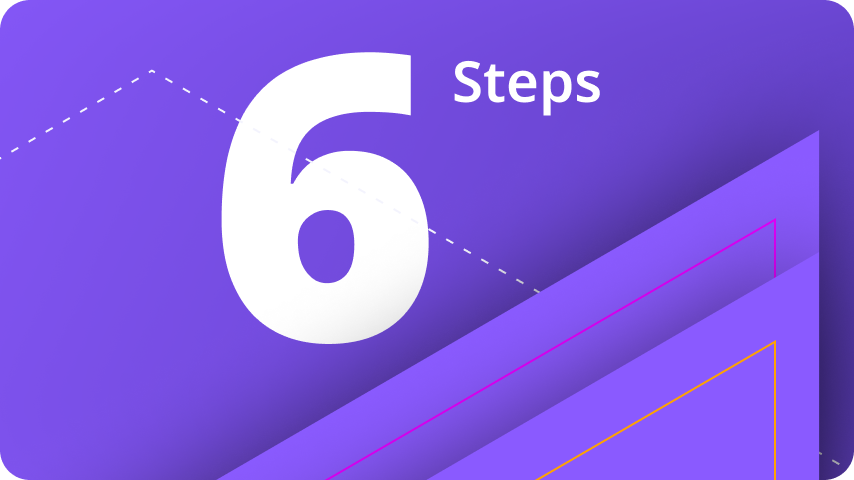May 11, 2023
A migração para a nuvem está se tornando cada vez mais comum, mas também complexa. Embora a maioria das organizações já tenha movido pelo menos parte de seus ativos digitais para a nuvem, estratégias de migração ainda enfrentam interrupções e atrasos com frequência.
Mas o fracasso não é inevitável. Um roteiro bem desenvolvido para migração pode ajudar a remover barreiras e evitar erros comuns. Siga esta checklist simples para garantir que você tem tudo o que precisa para uma transição tranquila.
>> Agende uma demonstração personalizada com nossa equipe de especialistas e veja como o iPaaS da Digibee trará eficiência ao seu negócio.
6 passos para otimizar sua migração para a nuvem
As iniciativas de transformação digital e migração para a nuvem se tornaram o principal motivo pelo qual as empresas adotam soluções de integração. E embora uma parceria com um provedor de integração possa minimizar interrupções e períodos de inatividade durante a migração, você ainda precisará de um plano estruturado para otimizar essa transição.

Etapa 1. Defina os seus objetivos
Compreender o que você espera alcançar é essencial para o sucesso da migração para a nuvem. Identifique os fatores que estão motivando a sua mudança para a nuvem e como você determinará se atingiu seus objetivos. Sua organização está buscando:
- Modernizar sistemas legados
- Adotar novas tecnologias como parte de uma transformação digital
- Aumentar a escalabilidade dos recursos
- Reduzir a carga na sua equipe de TI
- Obter redução de custos
Etapa 2. Planeje seu ambiente
A próxima etapa para desenvolver sua estratégia de migração para a nuvem envolve planejar o ambiente de destino na nuvem. Isso pode incluir a escolha de um provedor de nuvem – atualmente 87% das organizações usam uma estratégia multi-cloud , então não presuma que seu ambiente de nuvem atual seja a melhor opção para novos planos de migração.
Faça um inventário de seus dados, aplicativos, sistemas e infraestrutura para determinar o que será incluído na migração para a nuvem e o que permanecerá no ambiente atual. Identifique dependências e fluxos de dados que possam afetar (ou ser afetados por) sua transição para a nuvem.
Etapa 3. Construa seu roadmap de migração para a nuvem
Depois de identificar o que está envolvido no seu plano de migração para a nuvem e para onde os elementos serão migrados, é hora de planejar como a transição acontecerá:
- Documente o desempenho, os desafios e os requisitos de toda a infraestrutura relevante
- Revise a compatibilidade entre seus ambientes existentes e de destino
- Planeje a ordem de suas tarefas de migração, considerando dependências e complexidade
- Determine marcos para cada etapa do processo de migração para a nuvem
Etapa 4. Implemente seu plano
Com os objetivos e o roadmap de migração estabelecidos, é hora de começar a migrar seus ativos para a nuvem. Trabalhando com um provedor de soluções de integração, você precisará:
- Replicar todos os dados mestres, garantindo que os endpoints existentes possam ser ajustados e reutilizados
- Desacoplar sistemas – evite transformar componentes monolíticos de sistemas legados em microsserviços, pois isso pode aumentar a complexidade e os custos da migração
- Certificar-se de que o ambiente de nuvem de destino, a rede e os sistemas existentes estão conectados e se comunicando corretamente
- Migrar aplicativos e dados, testando a acessibilidade e a funcionalidade de forma contínua
Etapa 5. Valide sua migração para a nuvem
Depois de concluir todas as etapas do seu plano de migração, é essencial validar o sucesso da transição antes de entrar em operação com as mudanças. Seu novo ambiente na nuvem deve ser uma cópia exata do ambiente de produção, permitindo testes rápidos para confirmar que todos os serviços críticos estão funcionando e que todos os dados estão acessíveis.
Etapa 6. Replique transações e ative
Os históricos de transações podem ser migrados de forma incremental ou em uma única operação – sua estratégia deve ser definida pelo volume e localização dos dados. Após a replicação das transações, você pode “virar a chave” e adotar o ambiente replicado na nuvem como o ambiente de produção. Desative as integrações relacionadas ao ambiente on-premises e desenvolva um plano para descomissioná-las.
A integração é a chave para o sucesso da migração para a nuvem
A integração é o elo que conecta suas capacidades atuais ao que você busca alcançar na nuvem, reduzindo os riscos associados às estratégias de migração.
A Digibee desenvolveu uma solução de Integration Platform-as-a-Service (iPaaS) que facilita para sua equipe a tarefa de liberar dados de sistemas legados e alcançar suas metas na nuvem, seja qual for o objetivo. Nossa interface intuitiva e low-code simplifica o processo de integração, permitindo que desenvolvedores de todos os níveis de habilidade criem integrações que maximizam o valor dos investimentos na nuvem.
Nossas Relatório – 2023 State of Enterprise Integration destaca o papel essencial que a integração desempenha nas estratégias atuais de migração para a nuvem. Baixe sua cópia gratuita hoje ou agende uma demonstração sem compromisso para ver nossa solução em ação.
1Relatório do estado da nuvem de 2023, Flexera








